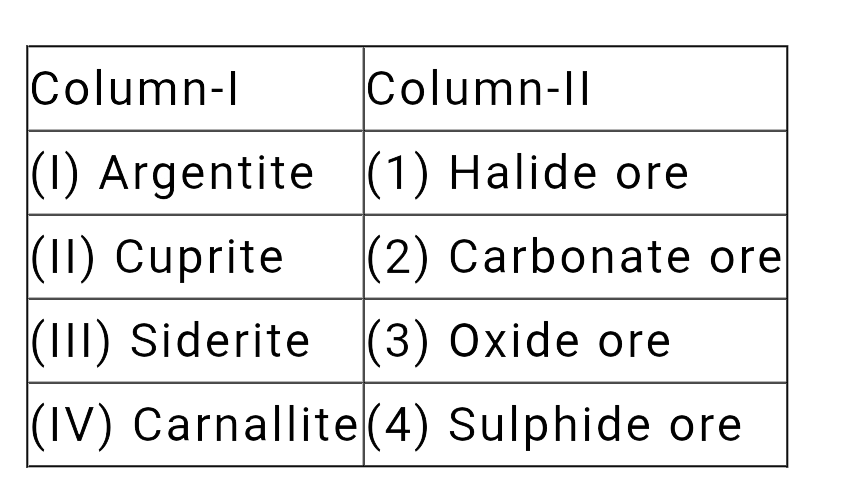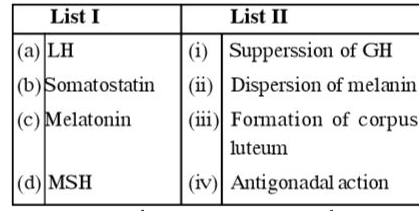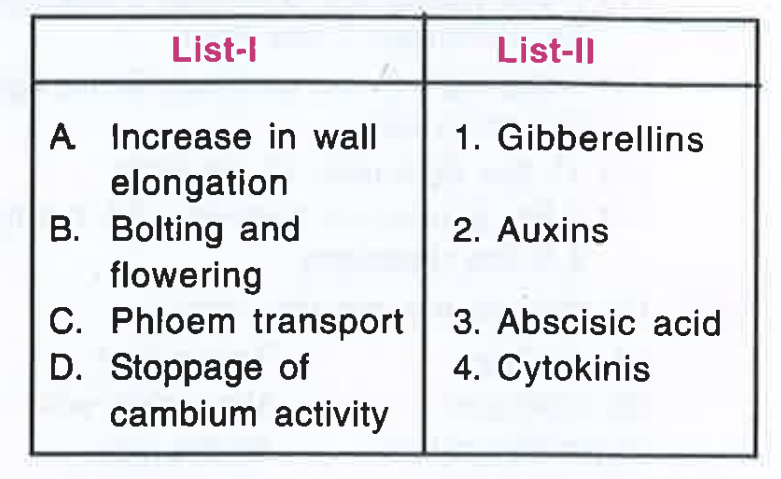Which of the following components are associated with nitrate reductase activity?
1. Reduced pyridine nucleotide
2. Flavin adenine dinucleotide
3. Molybdenum
4. Boron
Select the correct answer using the codes given below
1, 2 and 3
1 and 2
2, 3 and 4
1, 3 and 4
The correct Answer is:1
To determine which components are associated with nitrate reductase activity, we will analyze each option provided in the question.
1. Understanding Nitrate Reductase:
- Nitrate reductase is an enzyme that catalyzes the first step in the reduction of nitrate (NO3-) to nitrite (NO2-), which is an essential process in nitrogen metabolism in plants.
2. Analyzing the Components:
- Reduced Pyridine Nucleotide: This is a cofactor that provides the necessary electrons for the reduction process. It is indeed associated with nitrate reductase activity.
- Flavin Adenine Dinucleotide (FAD): FAD is another cofactor that plays a role in various enzymatic reactions, including those involving electron transfer. It is also associated with nitrate reductase activity.
- Molybdenum: This is a metal cofactor that is essential for the activity of nitrate reductase. It is a critical component that facilitates the enzymatic reaction.
- Boron: While boron is an important micronutrient for plants, it is not directly associated with the activity of nitrate reductase.
3. Identifying the Correct Components:
- From the analysis, we find that:
- Reduced pyridine nucleotide (1) is associated with nitrate reductase.
- Flavin adenine dinucleotide (2) is associated with nitrate reductase.
- Molybdenum (3) is associated with nitrate reductase.
- Boron (4) is not associated with nitrate reductase.
4. Selecting the Correct Answer:
- The components that are associated with nitrate reductase activity are 1 (Reduced pyridine nucleotide), 2 (Flavin adenine dinucleotide), and 3 (Molybdenum).
- Therefore, the correct answer is option A: 1, 2, and 3.
Final Answer:
The correct answer is A: 1, 2, and 3.
- Nitrate reductase is an enzyme that catalyzes the first step in the reduction of nitrate (NO3-) to nitrite (NO2-), which is an essential process in nitrogen metabolism in plants.
- Reduced Pyridine Nucleotide: This is a cofactor that provides the necessary electrons for the reduction process. It is indeed associated with nitrate reductase activity.
- Flavin Adenine Dinucleotide (FAD): FAD is another cofactor that plays a role in various enzymatic reactions, including those involving electron transfer. It is also associated with nitrate reductase activity.
- Molybdenum: This is a metal cofactor that is essential for the activity of nitrate reductase. It is a critical component that facilitates the enzymatic reaction.
- Boron: While boron is an important micronutrient for plants, it is not directly associated with the activity of nitrate reductase.
- From the analysis, we find that:
- Reduced pyridine nucleotide (1) is associated with nitrate reductase.
- Flavin adenine dinucleotide (2) is associated with nitrate reductase.
- Molybdenum (3) is associated with nitrate reductase.
- Boron (4) is not associated with nitrate reductase.
- The components that are associated with nitrate reductase activity are 1 (Reduced pyridine nucleotide), 2 (Flavin adenine dinucleotide), and 3 (Molybdenum).
- Therefore, the correct answer is option A: 1, 2, and 3.
The correct answer is A: 1, 2, and 3.
Topper's Solved these Questions
Similar Questions
Match Column-I with Column-I and select the correct answer using the codes given below :

View SolutionMatch the colum (I) and (II) and select the correct answer using the codes given below.

View SolutionMatch list - I with list - II and select the correct answer using the codes given below

View Solution
match List-I with list-II and select the correct answer using the codes given below:
View SolutionMatch List 1 with List 2. Select the correct answer using the codes given below the list.

View SolutionMatch List 1 with List 2. Select the correct answer using the codes given below the list.

View SolutionMatch List 1 with List 2. Select the correct answer using the codes given below the list.

View SolutionMatch list I with list II and select the correct answer using the codes given below the list

View SolutionMatch list -I List-II and select the correct answer using the codes given below the lists

View SolutionMatch List-II with List-II and select the correct answer using the codes given below:

View Solution
